Growing white cabbage: the best varieties and agricultural technology
About the beloved vegetable of the Russian man, cabbage, a lot has been written, but you can always find what is still unknown about the successful cultivation of the queen of garden plants.
Even from the first centuries BC, information about a wonderful vegetable, cabbage, has come down to us. Of course, she looked completely different from what she is now, but this does not diminish her importance in those distant times. Breeding research with the aim of developing new varieties of white cabbage especially intensified in the 20th century, when many different types of vegetables appeared.
Content:
- Harvest varieties of white cabbage, their features
- Method of growing cabbage seedlings
- Rules and dates for planting cabbage seedlings in open ground
- Recommendations for the care of white cabbage
- Cabbage pests and control
- Vegetable diseases and prevention
- Harvesting and storage rules
Harvest varieties of white cabbage, their features
Variety selection cabbage depends on the purpose for which the vegetable will be used. If the early cabbage cannot be stored for a long time, but it is good for summer salads, then the late one develops more slowly, is resistant to frost, and is fermented for the winter.
Let's see what varieties gardeners choose for growing a vegetable:
- Juicy, spreading heads of cabbage have an early ripening variety Malachite, but it is small in weight - about two kilograms.
- Many people choose Taurus for cultivation, the fruits of which reach more than six kilograms in a short time.
- Mid-season Dobrovolskaya cabbage has a pleasant taste and can be stored for up to six months.
- Many people choose the Gift variety for its spicy taste and juiciness. It is stored for a long time, it is mainly used for fermentation, salting.
- One of the most productive varieties is Moscow late. In addition to the fact that its fruits can weigh up to ten kilograms, it is highly resistant to cold and disease. Its heads of cabbage can be stored fresh until spring.
- Many growers prefer Slava for cultivation, which is considered a variety with a fast ripening period of less than 90 days with high yields per unit area.
- Cabbage Kolobok is good for sourdough, for fresh storage. More than ten kilograms of a juicy vegetable can be harvested from one square meter.
For each region, its own varieties of cabbage are selected, taking into account the ripening time of the garden plant.
Method of growing cabbage seedlings
Getting a high yield of vegetable crops depends entirely on the choice of seeds and their preparation for sowing. To improve the germination of seed, it is necessary to carry out a number of measures with it, which include hardening, stratification, disinfection, warming up. Disinfection produce as follows: place the seeds in wet layers of gauze, dipping first in hot water for ten minutes, then two - in cold. Once the seeds are swollen, they can be placed in the bottom of the refrigerator for a day to harden.
The preparation of the soil plays an important role, especially if it is taken from the garden, and it may contain fungi and pathogens.
For disinfection, the box with soil is placed in a highly heated oven for several minutes. Before planting, it is best to spill the earth with a 1% solution of potassium permanganate. The time of planting seeds is calculated depending on the growing season of the selected variety: for the early ones it is February-March, for the later ones - May and later.
In order for the seeds to germinate faster, it is necessary to prepare a warm place with good illumination for the containers. After emergence, the boxes can be placed in a cooler room. After the appearance of two leaves, seedlings dive, providing high humidity throughout the entire growth of seedlings, the average air temperature within twelve degrees above zero. The early varieties of cabbage are planted in open ground at the end of April.
Rules and dates for planting cabbage seedlings in open ground
For white cabbage good growth is characteristic on loamy, clayey, moist and humus-rich soils. The yield will be high if the acidity of the land is neutral. The site for cabbage is chosen after it has been planted. cucumbers, Luke, tomato, potatoes.
The place for cabbage seedlings should be sunny, without shading.
Having dug up a section of the garden for cabbage in the spring, they apply potash, phosphate fertilizers, and humus in poor soils, burying them in the soil with the help of loosening with a rake.
The placement of seedlings depends on the varieties of cabbage: the early ones are forty-five centimeters apart, and the later ones are seventy centimeters apart. The planting time for cabbage is different depending on the type:
- Early maturing - from the second half of April to early May.
- Medium varieties - until mid-May.
- Late types of cabbage - until the end of May.
Planting seedlings, it must be remembered that you cannot deeply deepen it, filling up the outlet. It is necessary that it is level with the topsoil. At low humidity, the seedlings should be watered, and after absorption, sprinkle with dry earth.
It is better to plant cabbage in open ground during the onset of heat in the evening, and in the daytime cover the leaves with a canopy of fabric so that they do not receive a severe burn. Compliance with the rules of care and planting of seedlings will help in the future to get strong, healthy heads of juicy crispy cabbage.
Recommendations for the care of white cabbage
Although cabbage is classified as an unpretentious plant, it requires special attention to itself:
- Watering vegetables are carried out in a plentiful way, shedding the soil up to fifty centimeters deep. In dry summer, make up to ten waterings, three liters for each bush. You can check if a vegetable needs watering in this way: take some soil at a depth of 7 centimeters, squeeze it in your fist, and then throw it onto the trail. A crumbling lump indicates that the plant needs water. And the more leaves a plant forms, the more moisture it needs, because cabbage spends about ten liters of water on their formation every day. Reduce the amount of watering before harvest to prevent the heads from cracking. Excess moisture for cabbage is also considered destructive, root system starts to rot.
- Top dressing is done in conjunction with watering, first two weeks after planting seedlings, and then every three weeks. As a fertilizer, diluted mullein (1: 5) or chicken droppings (1: 12) one liter per well. And other fertilizers are taken on a bucket of water of ammonium nitrate forty grams, potassium salt, superphosphate - twenty at the first feeding, and during subsequent procedures, the dose is slightly increased mineral fertilizers.
- Loosening the land around the plantings is combined with hilling vegetable bushes. Mulching with 5 centimeters peat also helps to maintain moisture, reduce the amount weedsincreasing plant nutrients.
The juiciness of cabbage, which is so popular in salads and necessary for pickling, depends on the proper care of the vegetable.
Cabbage pests and control
Not only people love cabbage, but also pests are ready to feast on it:
- In the spring, the cabbage fly begins to lay eggs in the ground next to young plants. And a week later, the larvae that appear rush to the root of the vegetable, feeding on its juices and leading it to death. Early planting dates seedlings will save her from the invasion of flies, and the hilling carried out on time will destroy the larvae, and allow the roots to grow stronger. Spraying with insecticidal preparations will help get rid of the pest.
- Butterfly, cabbage scoop lays eggs on the back of the leaf, crawling out of them caterpillarsthat eat the plant. This problem can be dealt with not only with the help of insecticides, but also with the infusion of the stems tomato (for ten liters of hot water, four kilograms of tops) with the addition of laundry soap.
- Garden fleas like to eat cabbage leaves, gnawing small holes in them, which causes them to dry out and the vegetable to die.
- The cabbage moth can be recognized by its babies, caterpillars of a light green color, which, when touched, curl up with a horseshoe. They eat away the inner flesh of the leaf, leaving the skin intact. The fight against these pests is carried out only with the help of special means.
- In wet summer, cabbage is threatened by slugs, which can be dealt with either manually, by collecting them, or by scaring away, sprinkling dry mustard or ground pepper in the aisles.
- You can get rid of the cruciferous flea by spraying the plantings with an infusion of ash, tobacco, prepared from a glass of the substance on a bucket of water.
- Affected aphids the leaves of the plant become pinkish, twisted at the ends. The parasite is fought in the same way as with other pests.
Vegetable diseases and prevention
The most common diseases of white cabbage:
- Keela is one of the most common fungal diseases of the vegetable. Not only cabbage, but all her relatives may be exposed to this scourge. Infection with a fungus can be seen by stopping the head of cabbage in growth, wilting of leaves. A diseased plant is best destroyed. And to prevent the disease, add slaked lime to the soil, which will reduce its acidity. After the detection of pathology, it is necessary in the future not to plant representatives of cruciferous plants in this area.
- Black spots on different parts of the plant indicate infection with a fungus that tolerates winter well in plant waste. Proper seed preparation, removal of weeds, cabbage residues will help to avoid contamination.
- With leucorrhoea, areas appear on the cabbage, as it were, covered with white paint, after which the plant begins to turn brown, dry out. Copper preparations can save the vegetable.
- The appearance of a mosaic pattern on young leaves indicates infection with a viral disease that cannot be cured.
To prevent infection of cabbage with fungal and viral diseases, you must follow the rules agrotechnics vegetable crops, spray seedlings with biological agents such as Fitosporin, Baktofit.
Harvesting and storage rules
Cleaning cabbage produced in those terms that are determined to achieve ripeness of early, late plant species. You can make sure that the plant is ready for storage by feeling the head of cabbage, determining its density.
Pruning the head for storage during the winter should be such that a long stump remains with a pair of leaves. This will allow you to take moisture from them during lying down, keeping a fresh look for a long time. Keeping healthy, undamaged cabbages is best in a basement or cellar at freezing temperatures.
Many recommend hanging the cabbage or wrapping it in newspapers.
They love cabbage for its versatility. It is also good for preparing salads, first and second courses. It is fried, boiled, stewed, baked.And salads from fresh, sauerkraut are a storehouse of vitamins, nutrients that make us healthy, curing many diseases, improving the functioning of the stomach and intestines. The cabbage leaf itself is used as a compress for inflammatory lesions of the joints, varicose veins.
More information can be found in the video:




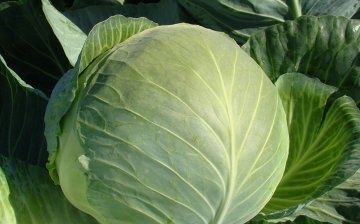
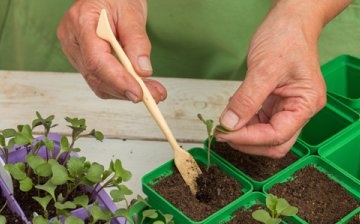
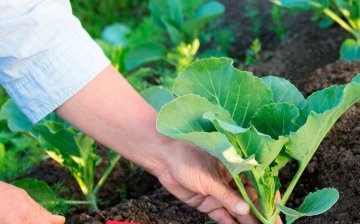
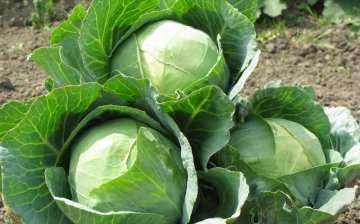
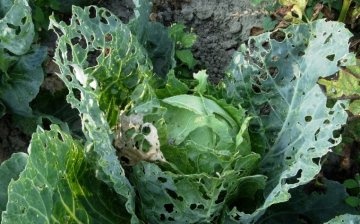
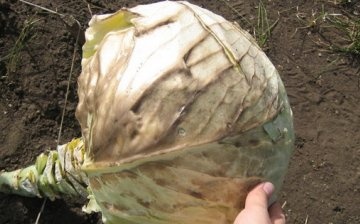









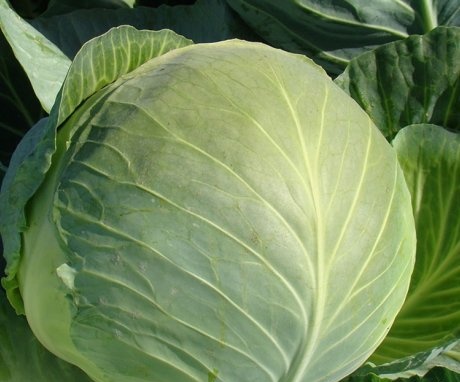
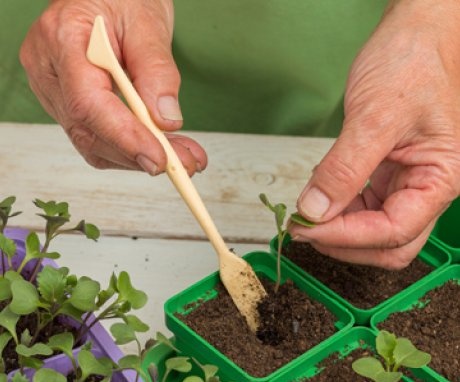
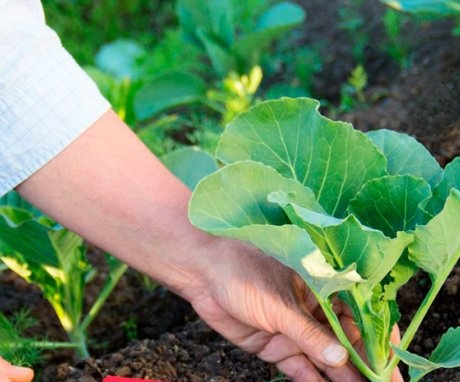
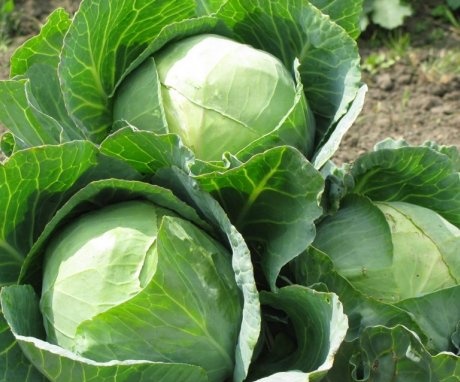
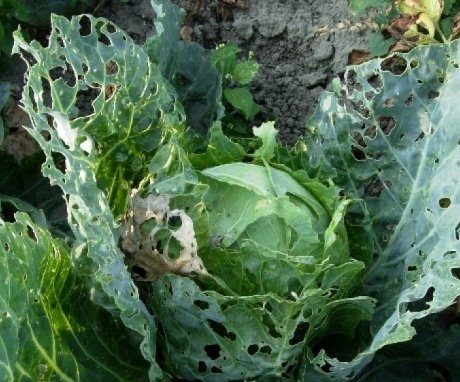
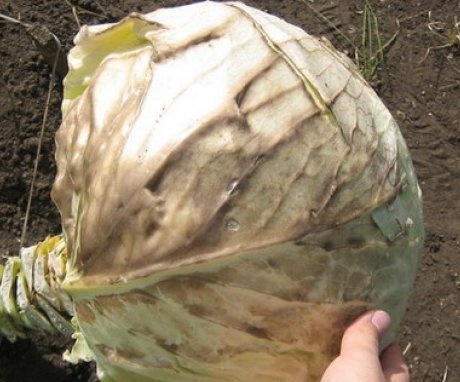
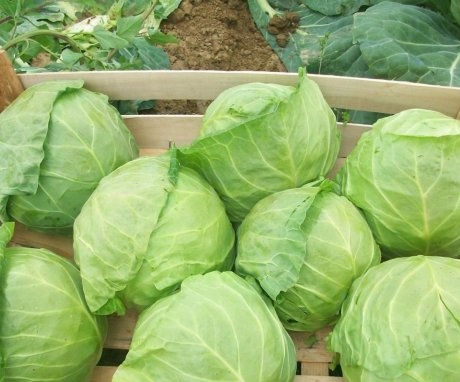
When growing white cabbage, you need to take into account that it is a moisture-loving plant, and in the heat of summer, cabbage will have to be watered even 2 times a day. The rest of the care for this vegetable is not so difficult, for example, the plant should be sprayed with Fitosporin after 10 days.